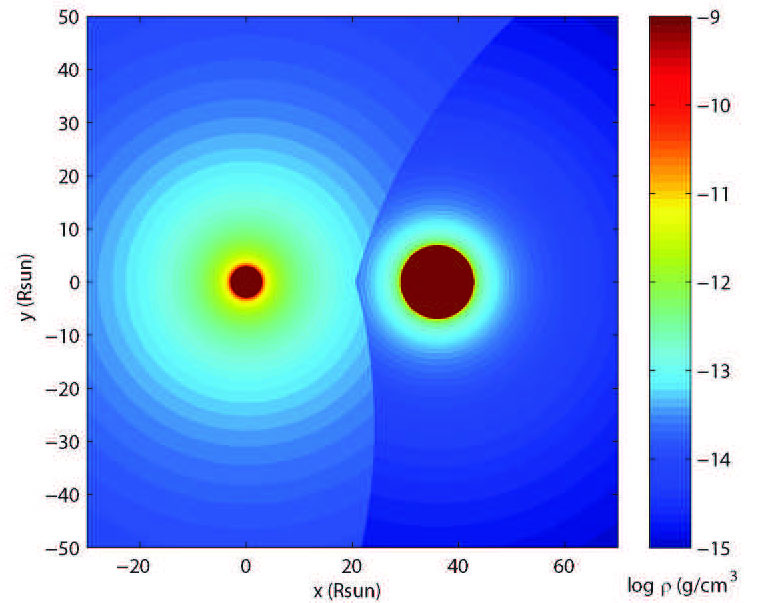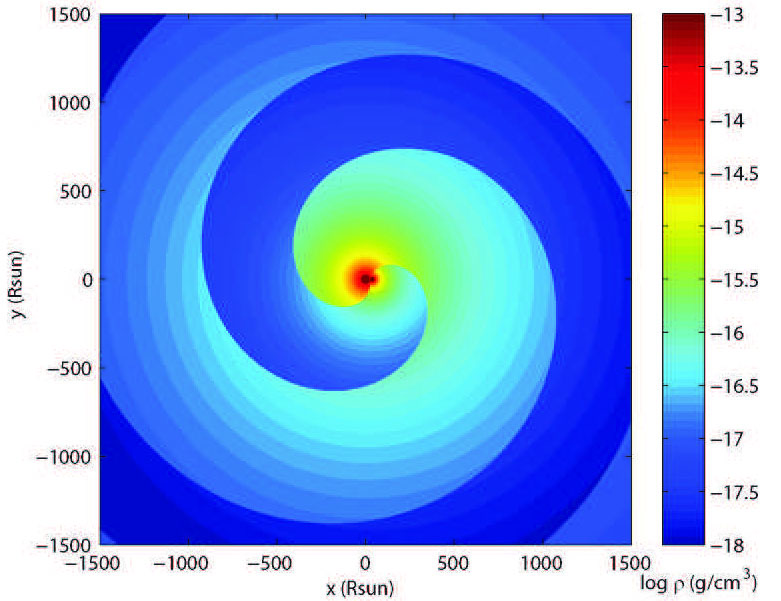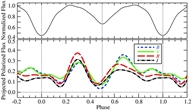|
|
 |


|
| Massive Stars |
| I am interested in the configurations of circumstellar material that surround massive stars, particularly as a result of post-main-sequence mass loss. This CSM preserves a record of the star's mass loss episodes and may affect its subsequent evolution. My group uses optical spectropolarimetric observations and 3-dimensional radiative transfer modeling to quantify the circumstellar structures in a variety of massive stars, with a particular focus on binaries and Wolf-Rayet stars. We also work with collaborators to incorporate into our analysis complementary data at other wavelengths, including X-ray spectroscopy and infrared interferometry. |
| |
| My group has recently published a new analysis of the circumstellar structures in the colliding-wind binary V444 Cyg (Lomax et al. 2015). This work was based on X-ray spectroscopy obtained with XMM-Newton (PI: Lomax) and optical spectropolarimetry obtained with HPOL, with data analysis and modeling supported by NASA ADAP funding. The project team included collaborators from ESA, USRA, U. Delaware, U. Leeds, U. Liège, and U. Toledo. |
| |
| We also participated in the multiwavelength campaign on the massive binary δ Ori. Four papers resulting from this campaign are in preparation and will be submitted in early 2015.
|
| |
| My group's research in this area has been sponsored by NSF award AST-0807477, NASA awards NNH08CD10C and NNX13AF40G, and two DU Faculty Research Fund awards.
|
| |
| Recent results: |
| |
 
V444 Cyg X-ray and polarimetric variability: Radiative and Coriolis forces shape the wind collision region, Lomax et al. 2015, A&A 573, A43 ADS > |
|

Geometrical Constraints on the Hot Spot in β Lyrae, Lomax et al. 2014, 2012, ApJ, 750, 59
ADS > |
|
|



